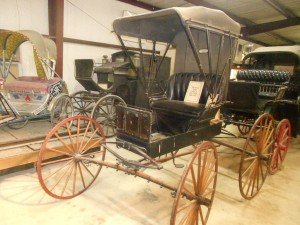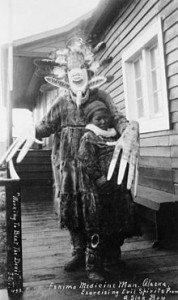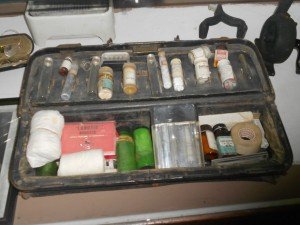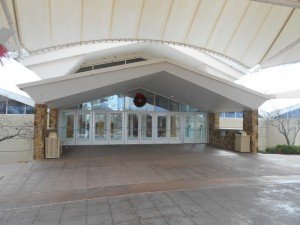Frontier Medicine
Thank you for reading this post, don't forget to subscribe!American frontier medicine is one of the most interesting aspects of the westward migration during the 1800’s and there’s many unique museums and historic sites to explore regarding the subject.

Make it a point to visit one of the many museums spread across the United States that chronicle the life and duties of frontier doctors. What was known of the art of healing during the 1800’s? How did doctors travel to tend to the sick and wounded? What types of instruments were available on the frontier? What medicines were available to the frontier doctor? All of these questions are answered in the artifacts, photos and articles exhibited at these museums. Visit one of these on your next vacation or road trip and you’ll be amazed at some of the things you’ll see and learn during your visit. Below are just a few of the museums you’ll enjoy visiting.
National Cowboy and Western Heritage Museum in Oklahoma City.
Robert Wood Johnson Museum of Frontier Medicine located at Fort Concho in San Angelo Texas.
The Oklahoma Frontier Drugstore Museum in Guthrie Oklahoma.
Medicine’s Hall of Fame & Museum in the former Central Harley-Davidson building in Shawnee Oklahoma.
The Fort Crawford Museum of Native American Medicine, in Prairie du Chien Wisconsin.
The Indiana Medical History Museum is located in Indianapolis Indiana.

Native American Medicine
Long before doctors from the east with their medical diplomas traveled to the western frontier, Native American tribes had their medicine men or shamans. Each may have performed their tasks a bit differently but all functioned as a link between the spirit world and the earth world. All tribes believed that illness came from the spirit world and it would take a man with a direct link to that spirit world to provide a cure.
Interestingly enough, the medicine man didn’t have things too easy. If a certain amount of tribe members died, the medicine man or shaman might be put to death.

The Role of the Frontier Doctor
In many western frontier towns during the mid to late 1800’s, the medical doctor could very well find himself as the most educated member of the settlement. Because of this the doctor at times performed duties not pertaining to medicine. He could also act as a political leader. It was a luxury in itself during the early days to even have a medical man within the community. One of the best example of this is the case of Dr. David S. Maynard who practiced in the Washington Territory during the 1850’s. Maynard, in addition to being the town physician, also served as a druggist, superintendent of schools, a merchant, justice of the peace and a notary public.
During the latter half of the 1800’s, many of the doctors who served on the western American frontier gained their skills during the Civil War. The doctor who settled there was an adventurous person who may have also been attracted to the region for potential mining opportunities. To be sure, the frontier presented more than enough challenges considering the gunshot wounds, epidemics and other injuries that were a common part of life there. The very way people had to live on the frontier, especially during the earlier years, bred a lot of sickness.
It’s often been said that the task of traveling to reach a sick or wounded patient was often considered as difficult or more so than successfully treating the patient.
The Military Doctor on the Frontier
The military doctor was in some ways quite different than the civilian American frontier doctor. The military doctor might have been an officer himself or in some cases was a contract physician assigned to a fort. The doctor was there in theory to treat soldiers but as was often the case would render his services to the nearby settlements if necessary.
Serving as a physician on the frontier was not without it’s dangers. A good example of this was Custer’s Battle of the Little Bighorn in 1876. Reportedly there were three physicians attached to Custer’s column. Out of the three only one survived the massacre. This was Dr. Henry Porter who had been with Major Reno’s detachment about a mile away from the Custer fight.

The most noted military physician in the American west may have been Dr. Leonard Wood who served in the southwest during the campaign against Geronimo and later was a commander with the Rough Riders during the Spanish American War. Wood would later become army chief of staff and came close to running for president in the early 1900’s. Dr. Leonard Wood was an exception in that most army physicians didn’t pursue the military as a career. After their military service was completed, many doctors settled in towns that were nearby the forts they had served at.
Remedies
Doctors who practiced medicine on the American frontier, whether they were military men or not, relied on remedies they were familiar with. Botonic physicians would be partial to herb and root concoctions. Allopaths would rely on calomel and ipecac. Generally though, many frontier doctors carried a bag that contained an assortment of medicines. A few of the more highly used medicines during the latter 1800’s included laudanum, morphine, quinine, jalap and ergot. There were many more.
Links to additional Trips Into History articles you’ll enjoy are Soldier Life on the Frontier and Frontier Women in the American West.

The Druggist
The drugstore was the arsenal of the frontier doctor. It was common for the physician to also be the druggist. The medicines received by the frontier druggist were not received in the ready to use form as they are today. The druggist would receive herbs, roots bark and leaves and these materials would need to be mashed and pounded. Since bleeding was a common treatment during this era, it wouldn’t be uncommon for a pharmacist to carry a supply of blood sucking leeches.
The 1800’s military also used a drug wagon that contained medicines that could be used in the field. In essence it was a mobile pharmacy.
Eventually, as the settlements grew from towns to cities, the two professions, physician and pharmacist, separated and each had more than enough to do in their own profession than to practice both.

Learn More About American Frontier Medicine
As mentioned in the beginning of this article, there are many interesting museums to visit in the U.S. which chronicle the efforts to provide health care on the wild American frontier. It’s interesting to learn how the profession evolved and about the challenges and dangers that went hand in hand in trying to treat the sick and wounded when supplies were limited.
All of these medical history museums, some of which are National Landmarks, make excellent additions to your vacation or road trip planner. They represent low cost ways to turn your road trip into an educational and fun experience.
Recommended books on this subject are Frontier Medicine by author David Dary and Doctors of the Old West by author Robert F. Karolevitz.
(Photos and images of medicine man and Dr. Leonard Wood from the public domain. Remainder of photos from the author’s collection)
